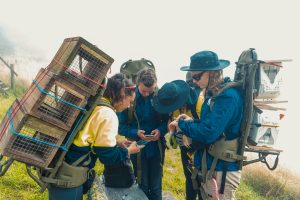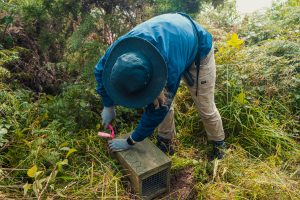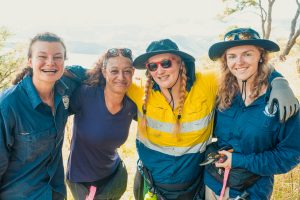Living Springs awarded grant to restore enviroment
Living Springs is honoured to officially announce our new environmental partnership with Te Hapū o Ngāti Wheke and Conservation Volunteers NZ.
Whakaraupō – He Rau Ringa e Oti ai (the Helping Hands programme)
He Rau Ringa e Oti ai is a well-known whakataukī that loosely translates as “Many hands make light work” which sums up our kaupapa and desires for Whakaraupō/Lyttelton. The programme partners will lead a series of projects to create sustained ecological and cultural regeneration of our ancestral harbour. Ecological and cultural restoration of Whakaraupō as mahinga kai is essential to ensure healthy, abundant, interconnected and sustainable life, waterways and communities. Helping Hands sits within and is closely aligned to the Whaka Ora Healthy Harbour partnership and Catchment Plan (www.healthyharbour.org.nz), a multi-partner non-regulatory initiative to restore mahinga kai values to Whakaraupō, kiuta ki tai(from the mountains to the sea). Infusing tikanga and kaupapa Māori values throughout the programme to inform our collaborative partnership approach will mean Helping Hands will be a game-changer for catchment-wide restoration work.
“Everyone involved will benefit from the knowledge exchange. The programme partners will pass on their ecological expertise to mana whenua and the field teams while the field teams and programme partners will learn about mātauranga Māori from mana whenua,” – Kiri Allan Minister of Conservation of New Zealand.
Led by Te Hapū o Ngāti Wheke, the project will receive $4.5 million from the Department of Conservation’s Jobs for Nature. The project will employ 20 people over the next three years to restore our ancestral harbour Whakaraupō. Each person employed has been affected in some way by Covid-19. The project includes two dedicated field teams managed by programme partners Conservation Volunteers NZ and Living Springs. Together we will work to restore three main sites (Rāpaki 1A2B Māori Reserve, Rāpaki Taukahara 1C Māori Reserve and Living Springs) through native restorative planting and the control of predators, pests and weeds.


Photo 1 – Team preparing to set traps out Photo 2 -Living Springs team member Sarah setting a DOC 200 trap
Our Living Springs team led by Grant Whitehead and managed by Anna Colombus started in October 2021. We have a team of 7 field workers who have already been a valued addition to the Living Springs community. The team will focus on planting 26,000 native trees in the coming years. In October 2021,they planted a total of 4500 native trees.At present the team are working on monitoring pests, weed control and track maintenance. The goal of pest monitoring is to understand the current population numbers of introduced pests species (possums, rats, stoats and hedgehogs) and then use a trapping network to get the population to under 5% of its current population. These species cause harm on both our native wildlife and plants. At commencement of the project the team has monitored the current population of pests in the area and are now deploying the trapping network throughout two initial catchments in accordance with our pest management plan.
The project is a major step towards one of Living Springs key aspirations towards becoming an Eco-Sanctuary. The move towards an eco-sanctuary on this unique 400 hectare property is an evolving one and had its inception forty years ago with a number of comprehensive tree planting programmes in the early years of Living Springs. There has been a considerable shift in momentum in last ten years since the beginning of the Allandale Stream Restoration programme in 2011 and the ‘Plant a Hundred Totaras” initiative and “Predator Free Allandale” concept in 2013/14. Out of this base began to emerge the idea of a Living Springs Eco-Sanctuary.
